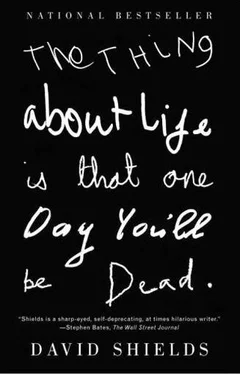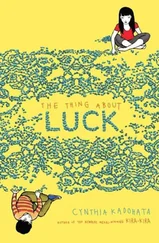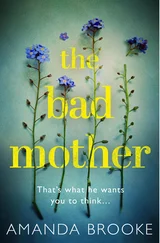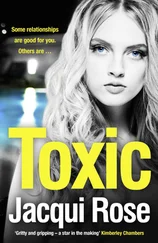My father got Schildkraut’s phone number and called him, telling him he was a Schildkraut, too, and inviting him to speak at the memorial tribute. “After much backing-and-filling and long, pregnant pauses (his, not mine) on the phone,” my father said, Schildkraut told my father to bring him the script. A few days later my father went to Schildkraut’s house in Beverly Hills to show him the script he would read at the memorial if he decided to appear on the program. Schildkraut came to the door, greeting Shields (né Shildcrout) stiffly. “He was very businesslike—cold, distant.” For a moment or two they talked about their families. My father told him about the backstage visit in 1923. Joseph knew absolutely nothing of the Schildkraut family’s ancestry. “Joseph Schildkraut, I would say,” my father said, “and I think it’s a fair statement, was somebody who didn’t think about his Jewish heritage.”
Schildkraut talked to my father for about thirty minutes in the foyer of the big, rambling house. “Later, in telling the story, I often exaggerated—said he clicked his heels, Prussian-like. He really didn’t.” Schildkraut said that he had to show the script to Dore Schary for approval. (Schary was a writer who had become the head of production at RKO and then MGM. Anti-Communist fears lingered; the blacklist was still in effect.) Schildkraut told Shields to come back in a week.
When my father returned, Schildkraut again talked with him rapidly in the foyer of the house—“On neither visit did he have me come into the living room, nor did he introduce me to his wife, who was moving about in the next room”—and wound up saying that Schary had read the script and said it was all right. The script was taken almost entirely from Einstein’s writings on civil liberties, academic freedom, and freedom of speech. The memorial was held at what was then the Hollywood Athletic Club and later became the University of Judaism. Also on the platform were Linus Pauling; A. L. Wirin, the chief counsel to the ACLU; John Howard Lawson, a screenwriter and the unofficial spokesman for the “Hollywood Ten” Anne Revere, who before being blacklisted won an Academy Award as best supporting actress for her performance as Elizabeth Taylor’s mother in National Velvet; and a novelist who my father insists was once famous and who in any case has a name worthy of the Marx Brothers—Lion Feuchtwanger.
The event was free. Every seat in the immense auditorium was filled. Hundreds of people sat in the aisles. Eason Monroe, the executive director of the ACLU and a man upon whom my mother had an immense, lifelong crush, asked the overflow audience to find seats or standing room in several small rooms upstairs. Monroe assured them that all the speakers would come upstairs to address them after speaking in the main auditorium. The program started a little late, about 8:30 P.M., but Schildkraut still hadn’t shown up. Monroe asked Shields, “Milt, where’s your cousin? It’s getting late.” My father assured Monroe he’d be there. “He was too big a ham to stay away on such an occasion.” His name had appeared prominently in the ads as one of the main speakers.
Finally, Schildkraut showed. Monroe greeted him and asked him if, as the others had consented to do, he would also speak to the groups upstairs. Schildkraut said that first he’d speak to the main auditorium audience; then he’d “see.”
The other speakers—Pauling, Wirin, Lawson, Revere, and Feuchtwanger—spoke to the audience in the main auditorium, were “warmly received” (whatever that means), then went upstairs to speak once again to the overflow audience in a couple of anterooms. “The occasion lifted even the most uninspired speaker and material to emotional heights,” according to my father. “But then came Pepi, the last speaker on the program. When he got to the podium, the audience was noisy and restless. After all, people were feeling the emotion of the memorial to this great man. Schildkraut took one look out there and employed the actor’s stratagem: he whispered the first line or two, and a hush fell over the audience. Then, when he was sure he had their attention, he thundered the next lines. When he finished, he got a standing ovation. And this for a political naïf, or worse: a man who certainly didn’t agree with everything he had just read, or anything else Einstein stood for. But he was the consummate actor, and he read his lines—to perfection.”
When Schildkraut finished, my father asked him about going upstairs. Schildkraut looked right through Shields and walked out the door. “Now he truly was like a Prussian soldier. That’s the last time I saw him. In person, that is. Of course, I saw The Diary of Anne Frank on the screen half a dozen times. And if it’s ever on television, I watch it again.”
By ages 30 to 34, women are 85 percent as fertile as they were at 20 to 24, and the rates decline to 35 percent by 40 to 44, and to virtually 0 percent after age 50. Among men, the decline in fertility is more gradual: at 45 to 50, men retain 90 percent of their peak fertility, a rate that declines to only 80 percent after 55. Males who mate with older women pass on less genetic coding, while females can mate with older men without the same problem.
On January 22, 2005, in Palm Beach, Florida, at Bethesda-by-the-Sea Episcopal Church, before 400 of their friends, Donald Trump, now 61, who is estimated to be worth $2.5 billion, married his companion of six years, blue-eyed Slovenian-Austrian model Melania Knauss, now 37. Trump was previously married to models Marla Maples and Ivana Winklmayr. Two sons and a daughter from his first marriage, and his daughter from his second marriage, attended the half-hour wedding, which was the culmination of three days of celebrations.
At the ceremony, the bride, who said she may want to have children (when her baby was born the following year, the baby pictures were sold to People for what were estimated to be “the mid-six figures”), lit the unity candle that she had used during her baptism. Knauss said she wanted an event that was “chic, elegant, simple, and sexy.” Her dress was made of 300 feet of white satin, had a 13-foot train, weighed 50 pounds, took all 28 of Christian Dior’s seamstresses 1,000 hours to stitch, and took an additional 50 hours to embroider. Trump said about Knauss, “When we walk into a restaurant, I watch grown men weep.”
According to French chef Jean-Georges Vongerichten, who donated his services, the new Mrs. Trump has “impeccable taste” Donald Trump is his landlord. The wedding cake stood two yards high and was covered with 3,000 sugar roses. The reception, held at Trump’s Mar-a-Lago mansion, featured a 36-piece orchestra.
Billy Joel, who at 55 had recently married “restaurant correspondent” Katie Lee, 23, in a wedding at which his daughter, Alexa Ray, 19, was a maid of honor, said Trump’s wedding was a “beautiful ceremony.”
When he was 53, John Derek was asked by Barbara Walters whether he would still love his wife, Bo Derek, then 23, if she were disfigured or paralyzed. He thought for a moment and said no. Bo Derek tried hard to smile, but she couldn’t.
Menopause, which typically occurs between ages 45 and 50, is unique to humans, for which there’s a good evolutionary reason: by age 50, a mother is beginning to experience many of the adverse effects of aging. She enhances her genetic contribution to future generations if she stops having babies of her own and thereby increases the likelihood that she’ll survive to raise her children and assist with her grandchildren.
Menopause happens gradually: 10 or more years before they cease menstruation, women may experience briefer cycles. At age 30, women typically get their periods every 28 to 30 days; at age 40, every 25 days; at 46, every 23 days. After age 35, women’s eggs are more genetically defective; if fertilization occurs, the babies produced are more likely to have birth defects. The follicles stop obeying orders from the brain to make estrogen. The amount of estrogen, especially estradiol, the most powerful estrogen, becomes scarce.
Читать дальше












